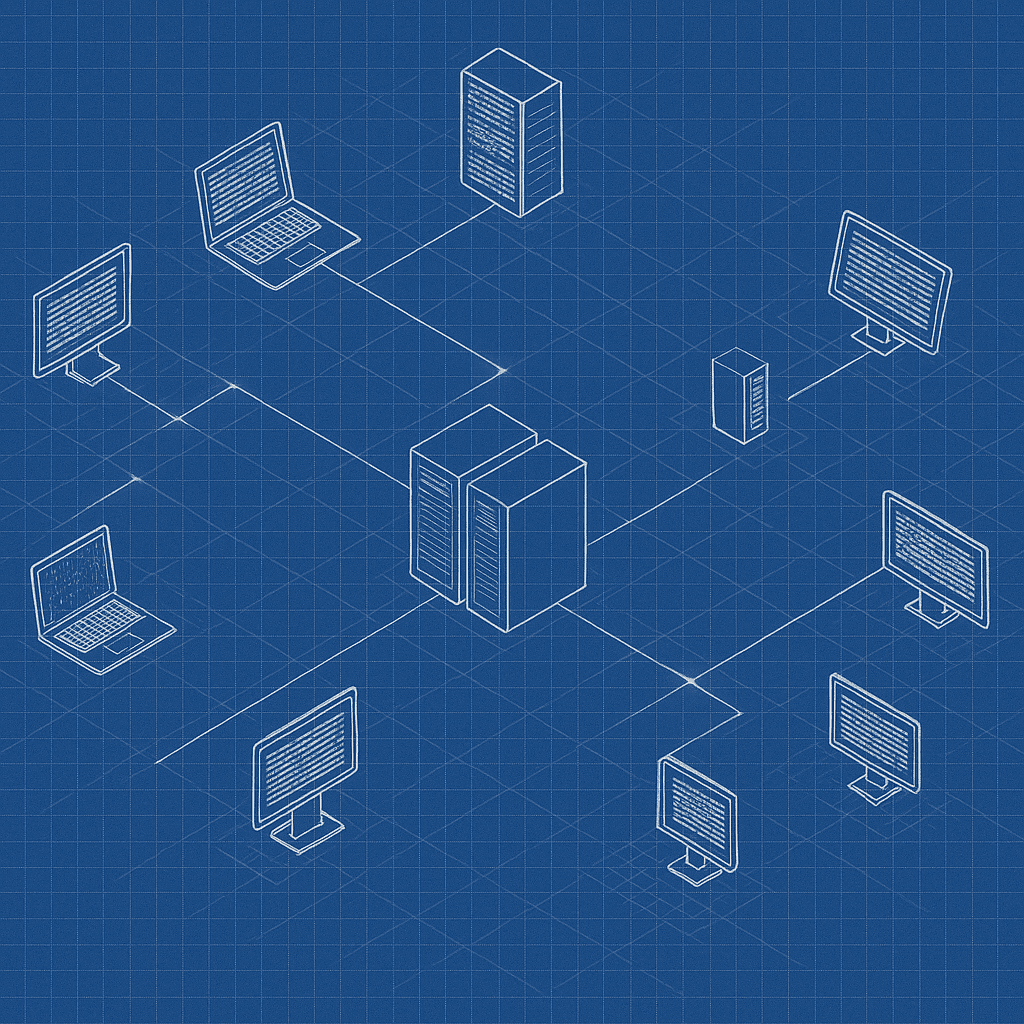
I wanted to better understand how multi-agent AI systems automatically enrich knowledge graphs. Not to become a top-tier expert, but to gain an appreciation for the abstractions I use every day — especially as AI research papers flood in at ever-increasing rates.
This post highlights what I've learned about building and orchestrating multiple specialized agents to handle tasks like document retrieval, entity extraction, schema alignment, and more. It's written for engineers new to knowledge graph enrichment, but who are already comfortable with concepts like large language models and AI pipelines.
A knowledge graph captures the relationships between entities (e.g., technical concepts, authors, publications) and provides a foundation for reasoning or advanced analytics. The challenge is constant maintenance and scalability:
In a traditional pipeline, you might try single-agent solutions that parse documents, perform summarization, and update the knowledge graph. However, large tasks like conflict resolution or schema alignment often need specialized logic¹. That's where multi-agent systems shine.
Multi-agent means exactly what it sounds like: multiple AI agents, each with distinct roles, collaborating to complete an overarching objective. Recent work from Peking University's Biomedical AI and Computer Technology department² highlights a nine-agent architecture for automated knowledge graph enrichment:
Controller Agent
Retrieval Agent
Segmentation Agent
Summarization Agent
Entity Extraction Agent
Relationship Extraction Agent
Schema Alignment Agent
Conflict Resolution Agent
Evaluator Agent
You might wonder: Why not collapse this system into fewer agents? Single or fewer-agent solutions often fall short when faced with the specialized demands of large-scale scientific updates — particularly conflict resolution and schema alignment. Researchers found that omitting any one specialized agent decreased overall performance. Even modest dips in metrics lead to more errors in final knowledge graph quality. The overhead of an extra agent is quickly offset by better accuracy and reduced confusion down the pipeline.
A central "controller" orchestrates each specialized agent in a predefined sequence. This is simpler to implement, though less flexible.
These architectures aim to evolve new agent behaviors on-the-fly in response to emerging complexities or newly introduced domains. Higher adaptability but more complex debugging.
One appealing aspect of multi-agent systems is that each agent's prompt or code can be upgraded without disrupting everything else. Suppose the "Relationship Extraction Agent" needs to incorporate advanced multi-hop reasoning for robotics. You can rewrite its prompt engineering or training approach while leaving the other agents intact.
# Define prompts and config for a specialized agent.
class RelationshipExtractionAgent:
def __init__(self, llm, rules):
self.llm = llm
self.rules = rules
def extract_relationships(self, text_segment):
# Possibly a structured LLM prompt call
# e.g., "Identify all cause-effect and part-of relationships."
llm_input = create_prompt(text_segment, self.rules)
return self.llm.process(llm_input)
# Additional steps like scoring, conflict detection, etc.Each agent orchestrates a piece of your pipeline. The controller agent coordinates them based on your knowledge graph's state and real-time logic, reminiscent of a microservices architecture in traditional software engineering.
When a new paper contradicts a known relationship in the graph, the "Conflict Resolution Agent" triggers a sub-workflow:
This approach ensures the knowledge graph remains consistent and up-to-date. Attempting such logic with a single agent typically leads to partial or overlooked conflicts.
Once all subtasks — from retrieval to conflict resolution — are complete, the "Evaluator Agent" calculates scores for final acceptance.
Only segments meeting specific thresholds get integrated into the main knowledge graph. The rest can be stored in a "quarantine" area, pending manual or further automated review.
Scalability: Handling daily volumes of AI research becomes more manageable when tasks are broken down
Specialization: Agents designed for distinct subtasks (e.g., summarization, schema alignment) collectively outperform monolithic approaches
Conflict Handling: Multi-agent systems systematically detect and resolve contradictory findings before they pollute the graph
Modular Updates: Each agent can be individually improved, speeding iteration and reducing integration risk
It's fascinating to see how dividing a large, intricate task into specialized subtasks, each powered by a domain-adaptive LLM, transforms an unmanageable update pipeline into a structured, consistent knowledge graph enrichment engine.
Getting Started Tip: If you're intrigued by building these systems, consider experimenting with a small pipeline. Even starting with two or three specialized agents can quickly validate whether multi-agent orchestration fits your knowledge graph needs.
¹: In practice, conflict resolution demands specialized domain knowledge. A single summarizing or classification agent rarely suffices.
²: Biomedical AI College of Computer Technology, Peking University. This multi-agent approach was demonstrated on 1,200 domain papers spanning genomics, proteomics, and metabolomics.
